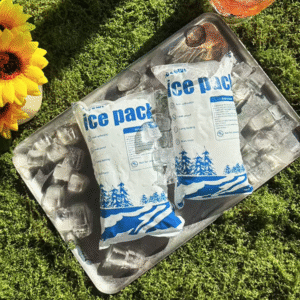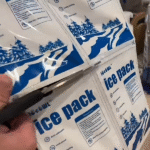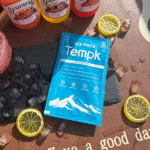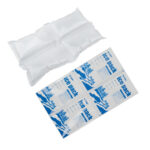How Can Cold Chain Management in Pharmacy Keep Medications Safe and Compliant?
Updated for November 2025 — ensuring temperature sensitive medicines stay within the required range during storage and transport is no longer optional for pharmacies. Cold chain management in pharmacy directly impacts patient safety, regulatory compliance and business performance. Industry reports estimate that around 20 % of pharmaceutical spoilage comes from cold chain failures, while more than half of prescription spending now goes to specialty drugs that often require refrigeration. Por 2025 pharmacies must prepare for new DSCSA deadlines and adopt technologies like real time monitoring and AI driven logistics to stay competitive.

Why rigorous cold chain management matters for pharmacies and patients, including cost implications and risks of temperature excursions.
How DSCSA 2025 and URAC 5.0 regulations affect pharmacy operations, with key requirements and deadlines.
Which technologies can optimise pharmacy cold chain management, from IoT sensors and AI route optimisation to advanced packaging algorithms.
How patient centric distribution models change cold chain logistics, such as direct to patient delivery and remote monitoring.
What market and sustainability trends shape cold chain management in 2025, including eco friendly packaging, hydrogen powered transport and digital product passports.
Why Is Effective Cold Chain Management Crucial for Pharmacies?
The integrity of temperature sensitive medicines depends on maintaining a narrow temperature window throughout storage and transport. Sobre 25 % of vaccines arrive degraded and 30 % of drug waste stems from logistics rather than clinical causes. Losses from cold chain failures cost the industry about US$35 billion annually, and even brief excursions can invalidate an entire batch. Specialty therapies such as biologics, GLP 1 agonists and gene therapies are particularly vulnerable, and pharmacists must mitigate risks to protect patient outcomes.
Beyond patient safety, poor cold chain control has direct financial and operational impacts. Temperature controlled logistics account for about 18 % of biopharma logistics spending. Losing just 2 % of that value can cost a US$500 million operation roughly US$10 million. Manual handling of refrigerated units in central fill pharmacies requires three to five times more labor than ambient products; a facility filling 3 000 unit of use items daily may need 10 additional full time employees, adding about US$725 000 por ano.
Impact of Poor Cold Chain Control: Costs and Risks
Inadequate cold chain management affects both product quality and business viability. The table below summarises key risk categories and their consequences.
| Risk Category | Exemplo | Impact on Pharmacies | Seu take -away |
| Excursões de temperatura | Vaccines exposed to temperatures outside the 2 °C–8 °C range | Degradation leads to ineffective therapy and potential recalls; brand reputation suffers. | Implement continuous monitoring and validated equipment to prevent excursions. |
| Shipment delays and disruptions | Natural disasters or logistics bottlenecks | Late deliveries jeopardise treatment schedules and may require replacement shipments. | Diversifique as operadoras, plan contingency routes and maintain safety stock. |
| Damage and mishandling | Vibration or shock during transport | Physical damage compromises container seals or packaging integrity. | Use robust packaging with shock absorption and train staff on proper handling. |
| Theft and security breaches | Diversion of high value biologics | Loss of product, financial loss and possible patient harm. | Employ tamper evident seals, track shipments in real time and restrict access. |
Dicas Práticas e Recomendações
Conduct regular risk assessments: Evaluate the entire end to end process for temperature, security and transit risks. Document results and update mitigation plans quarterly.
Invest in validated packaging and equipment: Choose passive or active containers tested for your typical shipping durations and environmental conditions.
Train your staff thoroughly: Ensure pharmacy teams understand temperature ranges, data logger usage and emergency protocols.
Use predictive analytics: Leverage AI tools to forecast weather impacts and identify potential bottlenecks so you can proactively adjust logistics.
Exemplo de caso: A regional health network increased its GLP 1 agonist volumes and discovered manual handling consumed nearly 40 % of labor for only 8 % of unit volume. By automating cold chain workflows and adopting high capacity refrigerators with integrated scanners, the network reduced labor costs by 30 % and improved order accuracy.
How Do DSCSA 2025 and URAC 5.0 Regulations Shape Pharmacy Cold Chain Operations?
2025 introduces stringent requirements for drug traceability and cold chain documentation. Under the Drug Supply Chain Security Act (DSCSA), manufacturers and repackagers must comply by 27 Poderia 2025, wholesalers by 27 Agosto 2025, and large dispensers (such as chain pharmacies) por 27 novembro 2025. These deadlines were extended to give organisations time to implement interoperable systems. DSCSA aims to prevent counterfeit or illegitimate products from entering the supply chain by requiring electronic transaction information, history and statements for each sale. Pharmacies must engage only with authorised trading partners and maintain product tracing data.
The updated URAC 5.0 accreditation standard emphasises continuity, sustainability and compliance synergy. Specialty pharmacies are required to define ideal temperature ranges, determine packaging and shipping durations and perform qualification testing for each therapy. They must also develop strategies that address environmental impact and align with patient specific needs. Em volta 77 % of supply chain leaders are prioritising sustainability, and the specialty market is projected to surge to US$118 billion by 2025.
Key Compliance Requirements for 2025 e além
| Standard/Regulation | Major Requirements | Deadlines & Notas | Seu take -away |
| DSCSA (NÓS.) | Electronic exchange of transaction information, history and statements; package level traceability; authorised trading partners only | Manufacturers/repackagers: 27 Poderia 2025; atacadistas: 27 Aug 2025; large dispensers: 27 Nov 2025 | Implement interoperable IT systems, assign staff for compliance and verify trading partners now. |
| URAC 5.0 (Specialty Pharmacy Accreditation) | Define temperature ranges, packaging and shipping durations; perform qualification testing; integrate sustainability and patient centric practices | Effective for new accreditations in 2025; existing pharmacies must align during renewal cycles | Use data loggers for validation and document packaging performance for each product. |
| FSMA 204 (NÓS.) | Traceability rule requiring key data elements (KDEs) and critical tracking events (CTEs) for high risk foods; maintain records for two years; provide data to FDA within 24 horas | Compliance extended 30 months beyond 20 Jan 2026, moving deadlines into mid 2028 | Align food and drug supply chain data to simplify processes and support cross industry compliance. |
| EU Packaging & Packaging Waste Regulation | Limit empty space to 40 % of package volume by Aug 2026; digital labelling with environmental data by 2027; recycled content thresholds (30–65 %) por 2030; require reusable packaging options | New obligations for U.S. pharmacies exporting into the EU; non EU companies must appoint an EU representative | Adopt modular packaging with minimal void space and prepare digital product passports for European shipments. |
Dicas Práticas e Recomendações
Start digital traceability now: Deploy integrated software that captures transaction data, serial numbers and environmental logs. Choose systems that can exchange information seamlessly with trading partners.
Develop a compliance roadmap: Assign a DSCSA compliance leader, map existing processes, identify gaps and create a timeline aligned with regulatory milestones.
Leverage accreditation requirements as a competitive advantage: Use URAC 5.0 guidelines to differentiate your pharmacy by highlighting validated shipping protocols and sustainability commitments.
Use tamper evident and trackable packaging: Implement packages with embedded sensors and tamper seals to simplify audit trails.
Exemplo de caso: A specialty pharmacy prepping for DSCSA digital traceability integrated blockchain with their order management system. This reduced manual paperwork by 70 % and improved recall response time from days to hours. It also helped demonstrate compliance during URAC re accreditation.
Which Technologies Improve Cold Chain Management in Pharmacies?
Emerging technologies provide pharmacies with unprecedented visibility and control over cold chain operations. IoT enabled smart sensors capture temperature, humidity and GPS data in real time, sending alerts to staff if thresholds are exceeded. AI powered route optimisation analyses traffic, weather and delivery windows to ensure products arrive within specified time frames. This reduces transit time, minimises temperature deviations and cuts fuel costs. Portable cryogenic freezers maintain –80 °C to –150 °C for cellular and gene therapies and provide real time tracking.
Pharmacies also benefit from packaging innovation and automation. The IceGen algorithm, developed by a specialty pharmacy provider, calculates the exact number of gel packs and optimal configuration based on product temperature requirements, weather forecasts and transit duration. This custom packaging approach achieved 99 % dispensing accuracy and 98 % on time delivery. Automation reduces labour requirements; manual processing of refrigerated items can require three to five times more effort, so central fill pharmacies are deploying robotics and conveyor systems integrated with temperature monitoring.
Automation and Real Time Monitoring at Central Fill and Specialty Pharmacies
| Tecnologia | Descrição | Benefícios | Seu take -away |
| Sensores de IoT & registradores de dados | Devices that continuously record temperature, umidade e localização; send alerts when deviations occur | Immediate response to temperature excursions; improves compliance documentation | Deploy sensors across storage units, vehicles and packaging; integrate with dashboards. |
| Otimização de rotas de IA | Algorithms that use real time traffic, weather and delivery data to schedule optimal routes | Reduz o tempo de trânsito, fuel consumption and risk of temperature excursions | Use AI to plan deliveries during cooler times of day and avoid congested routes. |
| Advanced packaging algorithms (IceGen) | Software that calculates gel pack placement based on product and environmental data | Customised packaging; reduces waste and ensures product integrity | Use predictive packaging tools to standardise shipments and reduce manual calculation. |
| Automação & Robótica | Automated dispensing and sorting equipment for refrigerated drugs | Lowers labour costs, improves accuracy, meets DSCSA serialization requirements | Invest in equipment that integrates scanning, labelling and temperature control. |
| Blockchain & gêmeos digitais | Distributed ledgers for tracking product provenance and digital replicas of supply chains | Melhora a rastreabilidade, supports DSCSA compliance, enables scenario simulations | Evaluate blockchain solutions that link to existing enterprise systems and digital twins for predictive maintenance. |
Dicas Práticas e Recomendações
Choose technology that scales: Begin with pilot projects for IoT sensors or AI routing; expand once ROI is proven.
Integre fluxos de dados: Consolidate sensor data, order management and compliance records into a single platform for analysis.
Encourage supplier collaboration: Use shared dashboards with suppliers and carriers to coordinate shipments and respond quickly to issues.
Exemplo de caso: A national chain integrated IceGen packaging algorithms across its pharmacy network. By tailoring gel pack counts and container configurations based on each shipment’s destination and weather forecast, it reduced shipping volume by 15 % and cut packaging waste by 25 %, while maintaining a 98 % on time delivery rate.
How Do Patient Centric Distribution Models Influence Pharmacy Cold Chain Logistics?
The rise of direct to patient (DTP) and direct to pharmacy/hospital (DTPH) models transforms cold chain responsibilities. Specialty drugs now account for more than half of prescription spending, and patients increasingly receive therapies at home. DTP and DTPH models bypass traditional distribution hubs, so pharmacies must ensure thermal protection from shipping facility to patient’s doorstep. Real time monitoring and flexible lane validations were highlighted at the 2025 Healthcare Distribution Alliance conference as essential for these models. Patients expect prompt, entrega confiável; delays or temperature excursions can erode trust and lead to wasted therapy.
Pharmacies must consider packaging, data and communication in DTP workflows. Thermal packaging must protect medicines from extreme ambient temperatures and mechanical stress. Real time monitoring devices allow patients and pharmacists to track shipments and confirm temperature compliance. Agility is essential; weather events or traffic disruptions require rerouting to meet delivery windows. Sustainable packaging options, such as reusable shippers or biodegradable insulation, help align with environmental goals.
Real Time Monitoring and Packaging for Direct to Patient Deliveries
| Consideração | Detalhes | Beneficiar | Seu take -away |
| Flexible lane validations | Pre approved routes that allow quick switches to alternate carriers or modes when disruptions occur | Maintains temperature control and timely delivery despite unforeseen events | Collaborate with carriers to validate alternative lanes and update them regularly. |
| Patient facing tracking | Mobile applications or portals that display shipment location and temperature | Builds patient confidence and reduces call centre volume | Provide clear instructions and support for patients to monitor shipments. |
| Agile packaging | Containers designed for shipping to homes, with easy opening and minimal waste | Enhances user experience and safety; reduces packaging volume | Choose packaging that is both thermally efficient and user friendly. |
| Care coordination | Synchronising pharmacy, courier and patient schedules | Ensures someone is available to receive the package and store it appropriately | Offer delivery windows and reminders; confirm addresses and storage instructions. |
| Materiais sustentáveis | Reusable containers and biodegradable insulation | Aligns with environmental goals and can reduce long term costs | Provide return labels or collection programs to retrieve reusable shippers. |
Dicas Práticas e Recomendações
Tailor packaging by geography: Use weather and transit data to adjust gel pack counts; deliver to cooler areas earlier in the day to reduce risk.
Educate patients: Provide clear instructions on unpacking, storage and contact numbers for issues. Use simple language and visuals.
Set up real time notifications: Send automated alerts to patients and pharmacists when shipments are dispatched, out for delivery or have experienced a delay.
Exemplo de caso: A specialty pharmacy adopted DTP delivery for a gene therapy requiring –80 °C storage. By using a portable cryogenic freezer with GPS tracking and sending text notifications to patients, the pharmacy maintained temperature integrity and improved satisfaction scores by 20 %. When a storm threatened scheduled deliveries, validated alternate routes enabled timely rescheduling.
What Are Current Market and Sustainability Trends in Cold Chain Management for Pharmacies?
The pharmaceutical cold chain market continues to expand rapidly. Global cold chain logistics for pharmaceuticals is valued at around US$ 436,3 bilhões em 2025 e está projetado para exceder US$ 1,3 trilhão por 2034 com uma taxa composta de crescimento anual de 13.46 %. The specialty market is expected to reach US$118 billion por 2025, highlighting significant opportunities. Growth drivers include the rise of biologics, GLP 1 therapies, personalised medicine and global e commerce. Ao mesmo tempo, sustainability mandates require reducing carbon footprints and packaging waste.
Sustainability is now a top priority. Survey data show that 77 % of supply chain leaders are focusing on sustainability. Regulations such as the EU Packaging & Packaging Waste Regulation mandate recycled content thresholds and limit empty space. Pharmacies are adopting reusable, recyclable and biodegradable packaging materials. Hydrogen powered refrigeration trucks are emerging as low emission alternatives to diesel, and smart energy management reduces the carbon intensity of warehouses. Digital product passports and blockchains will enable consumers and regulators to verify environmental footprints.
Sustainability and Digital Transformation Trends
| Tendência | Detalhes | Impacto | Seu take -away |
| Reusable thermal packaging | Use of reusable shippers and phase change materials reduces waste and long term costs | Decreases packaging waste and aligns with environmental regulations | Implement return programs to collect and sanitise reusable containers. |
| Hydrogen powered refrigeration vehicles | Hydrogen fuel cells power trucks with zero tailpipe emissions | Cuts greenhouse gas emissions and complies with ESG goals | Evaluate pilot programs for hydrogen or electric refrigerated vehicles on local routes. |
| Renewable energy & smart facilities | Solar panels, energy efficient HVAC, and real time energy management | Reduces operational costs and carbon footprint | Invest in facility upgrades and monitor energy usage in real time. |
| Digital product passports | QR codes or blockchain records providing environmental and traceability information | Enhances transparency and consumer trust | Prepare to label shipments with digital passports that share sustainability data. |
| Micro fulfilment & nearshoring | Locating warehouses closer to patients to reduce transit time and carbon emissions | Improves responsiveness and reduces logistics costs | Explore partnerships with local clinics or micro fulfilment hubs. |
Dicas Práticas e Recomendações
Audite sua pegada de carbono: Calculate emissions from packaging, transport and warehousing; identify high impact areas and set reduction targets.
Envolva-se com fornecedores: Request sustainability metrics from suppliers and prioritise eco friendly materials and transport providers.
Plan for regulation: Stay informed about upcoming packaging regulations, such as EU PPWR, and update suppliers and packaging designs accordingly.
Consider hydrogen pilot programs: If operating in regions with hydrogen infrastructure, pilot hydrogen powered refrigerated vehicles to evaluate performance.
Exemplo de caso: A multi state pharmacy chain replaced single use polystyrene shippers with reusable containers using phase change materials. Sobre 12 meses, the chain reduced packaging waste by 60 % and saved US$250 000 in material costs while maintaining temperature performance.
2025 Latest Developments and Trends in Cold Chain Management
Visão geral da tendência: O 2025 landscape showcases rapid integration of digital technologies, regulatory changes and sustainability initiatives. Real time monitoring and AI analytics are becoming mainstream, while DSCSA and URAC 5.0 push pharmacies towards interoperable, documented processes. The market continues to grow, driven by the expansion of specialty therapies and personalised medicine. Ao mesmo tempo, environmental concerns have shifted packaging and transport strategies towards reusability, renewable energy and digital passports.
Últimos desenvolvimentos de vista
IA & Gêmeos Digitais: Pharmacies adopt AI driven predictive maintenance and digital twin models to simulate supply chains and foresee potential temperature deviations.
Blockchain & Interoperable Systems: DSCSA’s 2025 deadlines accelerate adoption of blockchain platforms for secure, end to end traceability.
Sustainable Packaging Innovations: Biodegradable insulation materials and reusable containers are becoming standard; new US tariffs on packaging materials encourage local sourcing and modular designs.
Hydrogen Refrigeration Trucks: Hydrogen powered or electric vehicles reduce emissions, and pilot programs are underway in major logistics hubs.
Regulatory Harmonisation: Agencies like FDA, EMA and WHO explore harmonising standards to simplify global compliance.
Insights de mercado: The global pharmaceutical cold chain market is projected to grow from US$8.85 billion em 2024 para US$18.2 billion por 2030. Packaging types include active and passive solutions; temperature ranges vary from controlled ambient to refrigerated and frozen. Adoption of biodegradable insulation and AI route optimisation improves sustainability and efficiency. No Sudeste Asiático, solar powered cold storage reduces energy costs as solar rates range from 3.2 para 15.5 cents per kWh compared with commercial electricity rates of 13.10 cents per kWh.
Perguntas frequentes
How can pharmacies maintain DSCSA compliance while handling cold chain products?
Ensure your systems can capture and exchange transaction data, serial numbers and temperature logs. Use authorised trading partners, assign a compliance leader and integrate data from sensors and loggers. Conduct periodic audits and participate in industry test pilots.
What temperature ranges are typical for cold chain products?
Most refrigerated drugs require 2 °C–8 °C, frozen products need around –20 °C, and some advanced therapies like mRNA vaccines require –70 °C ou inferior. Portable cryogenic freezers may go down to –150 °C.
What should a pharmacy do if a temperature excursion occurs?
Documente o incidente, quarantine the product, contact the manufacturer for stability data and follow internal SOPs. Investigate the root cause (equipment failure, erro humano, clima) and implement corrective actions.
How do automated packaging algorithms like IceGen work?
They analyse factors such as product temperature requirements, external weather, transit time and container insulation to determine the precise number and placement of gel packs. This ensures products stay within the target temperature range while minimising excess packaging.
Are reusable containers cost effective compared with single use shippers?
Although initial investment is higher, reusable containers often reduce long term costs by eliminating the need for frequent replacement. They also reduce waste and support sustainability goals.
What is the difference between direct to patient (DTP) and direct to pharmacy/hospital (DTPH)?
DTP sends shipments directly to patients’ homes, while DTPH ships to hospital pharmacies for inpatient administration or immediate pickup. Both models require stringent thermal protection and real time tracking.
Resumo e recomendações
Effective cold chain management in pharmacy is essential for protecting patients, meeting regulatory requirements and maintaining business viability. As principais conclusões incluem:
Invest in validated equipment and automation: Temperature excursions cause costly losses; automated systems and real time monitoring reduce risk.
Plan early for DSCSA and URAC 5.0: Implement digital traceability systems and align packaging and sustainability protocols.
Embrace technology: Sensores de IoT, Otimização de rotas de IA, advanced packaging algorithms and blockchain improve efficiency and compliance.
Adopt patient centric logistics: Use direct to patient models with flexible lanes, agile packaging and real time tracking to enhance patient experience.
Priorize a sustentabilidade: Embalagem reutilizável, hydrogen powered refrigeration and digital product passports reduce environmental impact and align with regulations.
ACTO ACEDIVO PRÓXIMO PASSOS
Perform a cold chain audit: Assess your current processes, equipment and documentation. Identify gaps in traceability, temperature monitoring and staff training.
Select technology partners: Evaluate vendors offering IoT sensors, Roteamento de IA, blockchain and packaging algorithms. Start with pilot programs.
Develop a compliance roadmap: Align DSCSA deadlines, URAC accreditation timelines and EU packaging requirements. Assign responsibilities and track progress.
Implement sustainable packaging: Transition to reusable shippers and biodegradable materials. Collaborate with suppliers on recycling programs.
Educate your team and patients: Provide training on new technologies, SOPs and patient communication. Create patient friendly guides and FAQs.
Sobre Tempk
No Tempk, we specialise in innovative cold chain solutions for the pharmaceutical and healthcare industries. Our team combines decades of logistics expertise with cutting edge technology to ensure that temperature sensitive medications arrive safely, compliantly and sustainably. We offer solutions ranging from IoT monitoring systems and AI route optimisation tools to reusable thermal packaging and hydrogen powered refrigeration units. We work closely with pharmacies to tailor solutions that fit their unique workflows and regulatory requirements.
Our mission is to help you maintain product integrity, minimise waste and simplify compliance so that you can focus on patient care. We invite you to explore our solutions and see how we can support your cold chain management journey.
Links internos sugeridos
Central Fill Cold Chain Automation Guide – Learn how automation reduces labour and ensures DSCSA compliance in large pharmacy operations.
Implementing IoT for Temperature Monitoring – Step by step guide to selecting and deploying sensors and loggers.
DSCSA Compliance Checklist for Pharmacies – Practical checklist to prepare for the 2025 deadlines.
Sustainable Packaging Solutions for Specialty Drugs – Explore reusable shippers, biodegradable insulation and return programs.
Optimising Patient Centric Delivery Models – Strategies for DTP and DTPH logistics, including direct scheduling and communication.
Recommended Schema Markup
To improve search visibility and qualify for rich snippets, consider adding the following structured data to your webpage:
Artigo schema detailing author, publication date, last modified date and word count.
Página de perguntas frequentes schema capturing the questions and answers listed in the FAQ section.
Howto schema for step by step guides, such as implementing IoT sensors or preparing for DSCSA compliance.
Interactive Tools and User Engagement
Cold Chain Readiness Assessment: An interactive questionnaire that evaluates your pharmacy’s current cold chain practices and provides a personalised report.
Packaging Configuration Calculator: A tool that calculates the number of gel packs and container size needed based on product type, temperatura ambiente e tempo de trânsito.
Compliance Timeline Planner: A visual timeline that helps you map tasks to DSCSA and URAC deadlines, with reminders and resource links.
Chamado à ação
Ready to optimise your pharmacy’s cold chain management? Entre em contato com nossos especialistas to schedule a consultation or pilot our integrated solutions. Together we can build a safer, smarter and more sustainable cold chain that protects your patients and your business.























